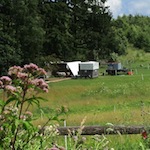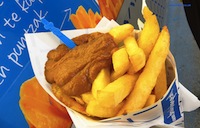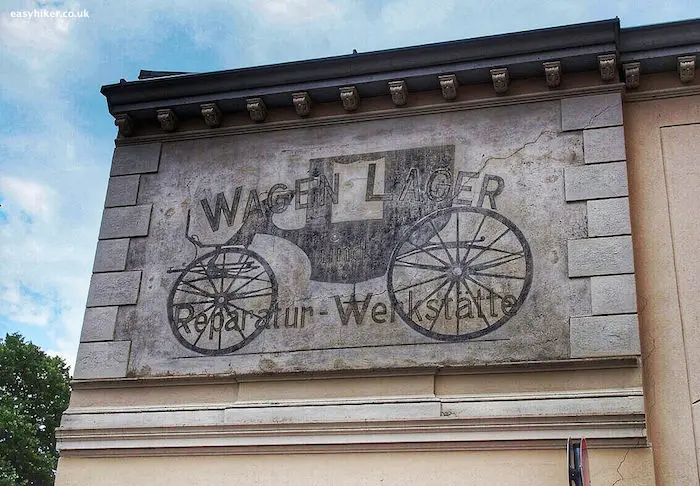The north German city of Lübeck was very much built “on the waterfront”. But which water would that be?
This is far from clear because there is a confusing variety of rivers, canals and natural waterways that all serve to connect the city to the Baltic Sea as well as to other sea ports.

If old Lübeck was at the heart of the Hanseatic League, the powerful supranational trade block of the late Middle Ages, the city’s various waterways were the arteries of its economic life.
The lower Trave in the north of the city (where most of the sea trade was handled) still betrays its formerly commercial character, but further upstream (towards the south of town), the very same waterways make for a wonderfully picturesque and scenic walk.
A Walk on the Waterfront of Lübeck’s Old Town
Leave the old town by crossing the river Trave via Holstentorbrücke into Holstentorplatz, and you will find Lübeck’s most famous landmark called – you guessed it – the Holstentor gate, an authentic leftover of the medieval town fortifications.

Right behind this gate, you will find the Puppenbrücke …

… which you should descend on your left hand side.
Immediately, you will feel transported into a different world.

The body of water on your right is called the Stadtgraben, which serves as a sort of outer ring to the inner ring of the river Trave that you have just crossed over the Holstentorbrücke. Dense vegetation gives this part of the town an almost subtropical feel.
You would never think that you are just a brief ferry ride away from Scandinavia and nearer to Copenhagen than to most cities in the north of Germany including Berlin.

After a while, you will arrive at the junction of the Stadtgraben with the river Trave.

Continuing your walk on the waterfront of Lübeck’s Old Town, cross the Trave on Dankwartsbrücke and turn right to visit a part of the old town which has preserved an “old world” Hanseatic feel – mainly because it was spared during the WWII bombing raids that laid waste to nearly half of the urban fabric in the northern, more commercial part of the city.
This part of the old town is more residential, calm and relaxed …

… and, in certain places, downright sleepy.

In short: the perfect place to escape to from the hustle and bustle of modern Lübeck.
One thing, meanwhile, you cannot escape so easily from are references to the city’s most famous son, the writer Thomas Mann.
In his early novella Tonio Kröger – which Thomas Mann called his “favourite work” – his highly autobiographical protagonist recalls visiting his home town after a long period of absence.
He traces back the routes he took as a younger man, walking down the Mühlendamm past the Mühlenteich “where the wind was rushing and moaning through the trees” in search of the sawmills that were owned by the father of his schoolboy crush.
This was the part of town down by the river where “powerful machine-saws hissed and spat and cut up timber“.
If you have come here for the “hissing and spatting”, you will be disappointed, and few traces can be found of the town’s once mighty timber-processing industry, but a mill is still there, providing a picturesque reminder of this area’s historical background.

From the mill, continue between Mühlenteich on your left and the Elbe-Lübeck Canal on your right.
This canal is the third large body of water that encloses Lübeck’s old town. It connects Lübeck’s docks with the river Elbe and, thereby, with its great Hanseatic rival, the city of Hamburg.
The earth mounds all around you were once part of the city’s fortifications. Nearly all of the stone walls were razed long ago, in a gradual process that already began more than 200 years ago.
Along the waterfront of Lübeck’s Old Town, only a few bastions have been preserved and were integrated into the parkland that replaced the old fortifications.

Return to the old town via Wallstraße where, on a bridge between two artificial lakes, you will be able to enjoy scenic views over the Mühlenteich on your left …

… and Krähenteich on your right …

… the perfect way to round off a scenic and interesting walk through a little-known part of Lübeck.






